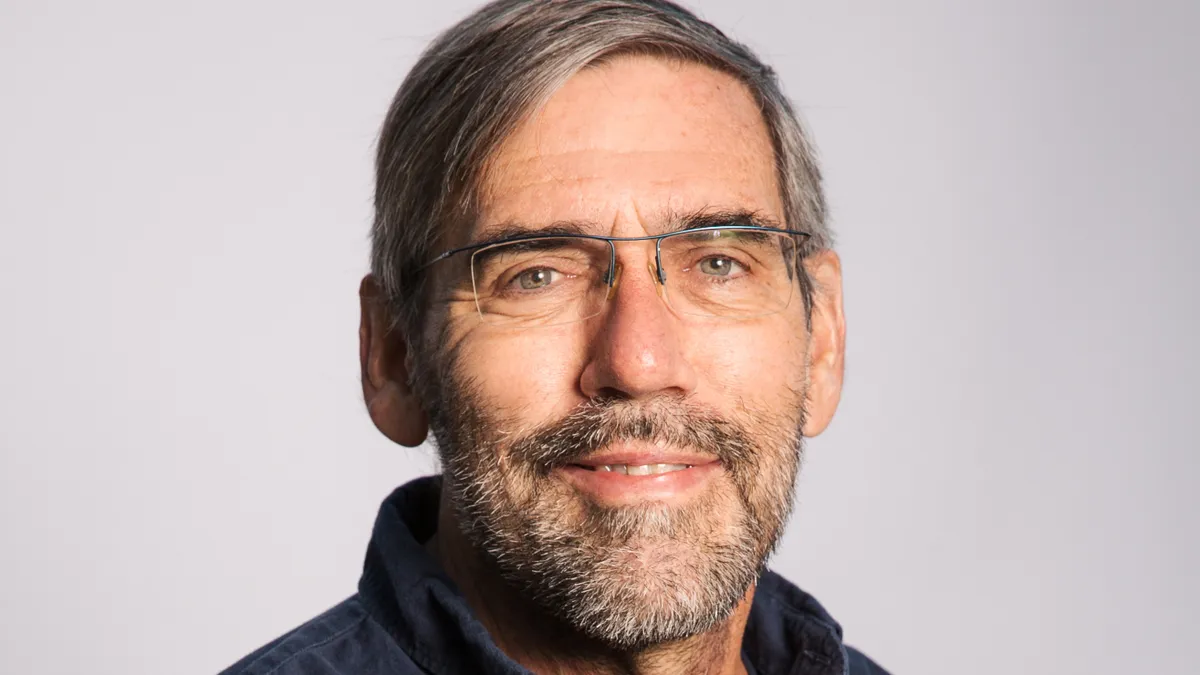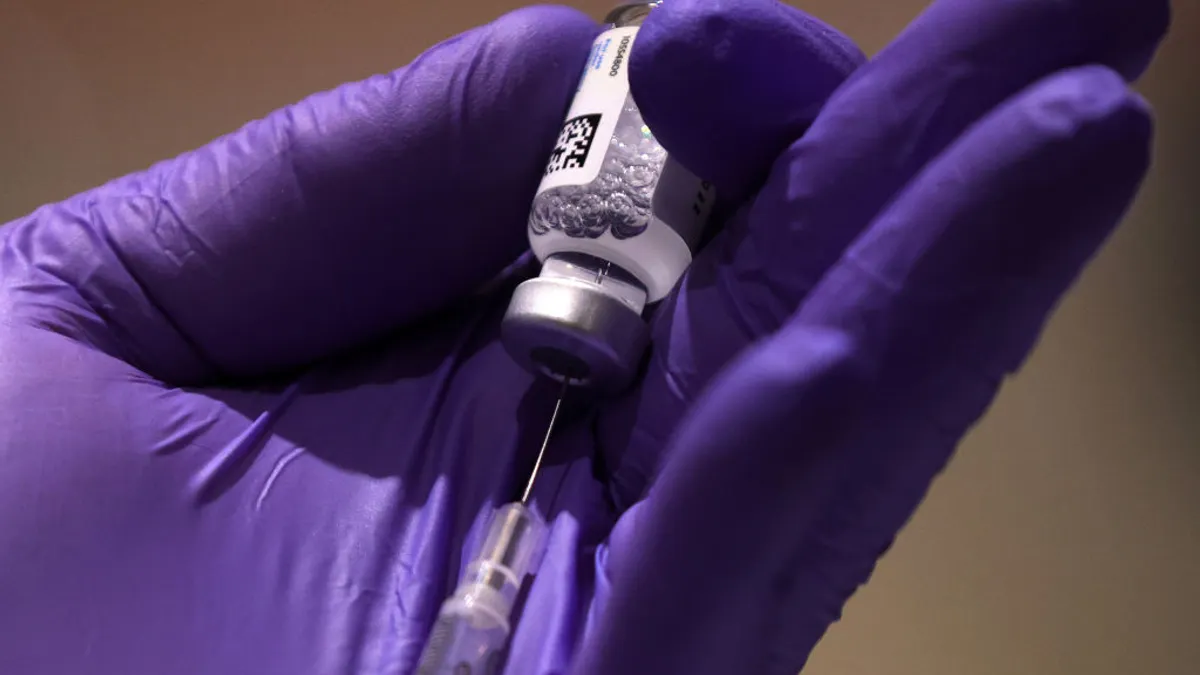Biotech booms come and go. A quick glance at the Nasdaq Biotechnology Index shows that peaks in 2015 and 2021 were relatively short-lived, giving way to a quick fall and slow recovery.
The truth, as some have said, is that the sheer number of startups rose to an unsustainable level in the early 2020s, and those with clear, significant evidence of scientific success shined through as others faded away.
Despite cutthroat competition, some leaders have found victory more than once and in multiple areas of the biotech realm. Serial entrepreneurs like John Mulligan, an honoree in this year’s PharmaVoice 100, have brought biotechs from the seed of an idea to lucrative pharma deals.
How do they accomplish a consistent track record that defies market softness? Here, Mulligan, now founder and CEO of Bonum Therapeutics, shares his philosophical approach to doing important science and running a successful biotech business in the face of less-than-ideal market conditions.
Lead with curiosity
Each of Mulligan’s ventures began with an original idea. For the first company he founded, Blue Heron Biotech, the idea was that “there would be a demand for gene synthesis that could change how people worked in the lab.”
After launching in 1999, that goal of developing synthetic DNA sequences for research purposes grew into a business that was eventually acquired by the lab testing services company EuroFins.
“If you look across the course of my career, it’s perhaps because of an excess level of perseverance that it worked out.”

John Mulligan
CEO, founder, Bonum Therapeutics
And in all his ventures, Mulligan said curiosity helped overcome any gaps in specific knowledge about the company’s work.
“Amazingly enough, when I was raising money for gene synthesis, no one asked if I’d ever done it — the answer was no, even though I had ideas, but we still invented the technology in the course of building the company,” Mulligan said. “I find it super interesting to learn something completely new, and it’s a challenge as a business but a real education as a business owner.”
Follow the science (creatively)
When it comes to the old adage of “following the science,” there’s also room for a biotech leader to follow their instinct. For Mulligan, these moments aren’t quite as distinguishable from one another as they might appear.
Another of Mulligan’s companies, Glycostasis, focused on engineering a human protein that releases or binds insulin when blood glucose rises and falls in patients with diabetes. Pharma giant Eli Lilly bought Glycostasis in 2016. The idea started conceptually for Mulligan and grew from an instinctual curiosity to tangible science.
“There are a lot of the same impulses that go into creativity that are required to do science at the cutting edge,” Mulligan said. “A lot of the hard part of doing science is defining the problem — what you’re doing when you’re exploring something new is you’re groping around trying to define the problem and solve it at the same time.”
As would be expected with this approach, “there’s a lot of muck we have to work through” to arrive at the solution, Mulligan said.
Most of all, matching the business to the product is important to spend time on initially, he said.
“The hardest part is making that connection between the business model and the technology,” Mulligan said. “That may be the easiest to miss when you’re getting going.”
Trust those around you
Biotech entrepreneurship wasn’t always a walk in the park for Mulligan despite his success. He raised money for Blue Heron as the dot.com bubble was bursting and sold another company during the latest downturn.
“That was a hard sell,” Mulligan said. “If you look across the course of my career, it’s perhaps because of an excess level of perseverance that it worked out.”
By transforming connections he made from the days before Blue Heron into a network of investors and board members, Mulligan said he created an infrastructure that allowed his companies to survive tough times. Mulligan’s Good Therapeutics — the predecessor to Bonum that sold to Roche for $250 million last year — “was informed by watching and thinking about how the scientific culture worked and what had gone wrong at other companies.”
Being selective about investors was key, Mulligan said.
“A good board is absolutely critical,” he said. “A good board isn’t somebody who gives us money in ignorance — a good board is somebody who understands the risks they’re taking and is willing to hear that we expect results sometime between three months from now and never.”
But having dependable investors and knowledgeable board members helped mitigate the biotech market’s softness.
“It’s been kind of weird because we’re sort of floating through the biotech downturn,” Mulligan said. “I’m not saying it didn’t have an impact on us — it certainly had an impact on discussions with Roche and made raising money more challenging, but we have committed investors and others waiting in the wings when we need it.”
Live on the edge
The tools of the biotech trade are always changing, and the right time to tackle a scientific problem is when you have the right instruments, Mulligan said.
“If you’re trying to study development before the microscope is invented, maybe that’s not the right time — it’s going to be really confusing,” Mulligan said. “It’s still confusing.”
Understanding what you can do with that’s available to you is part of the creative process and feeds the curiosity of what’s possible, Mulligan said.
“What’s the most interesting and cool thing you can do? If you look at what scientists in academia are doing, the ones that are really good, they’re right at the edge,” he said. “There are lots of ideas I haven’t pursued because ideas are easy and implementing them is hard.”
Learn to fail
Mulligan is not the same biotech leader today he was when Blue Heron spread its wings in the late 90s.
“My changing as a leader comes from failing — that’s a good start,” Mulligan said. “But being persistent and able to start over each time is key, so now I feel like I learned a lot by thinking about what can go wrong.”
Blue Heron never had more than six months of cash in the bank, by Mulligan’s estimates. That’s not how he runs things now because that kind of stress is unsustainable, but it taught him how to be more careful.
“Since then, with Good and Bonum, we’ve been extremely conservative with spending,” Mulligan said, noting that the companies grew slowly and kept to a “frugally efficient” process that still provided everyone the tools they needed. “The way to be efficient is to have each person in the company be able to work up to their full potential and not have a bunch of stuff in the way — it's giving people a clear vision of where the whole company is trying to go and what their part in it is.”





















